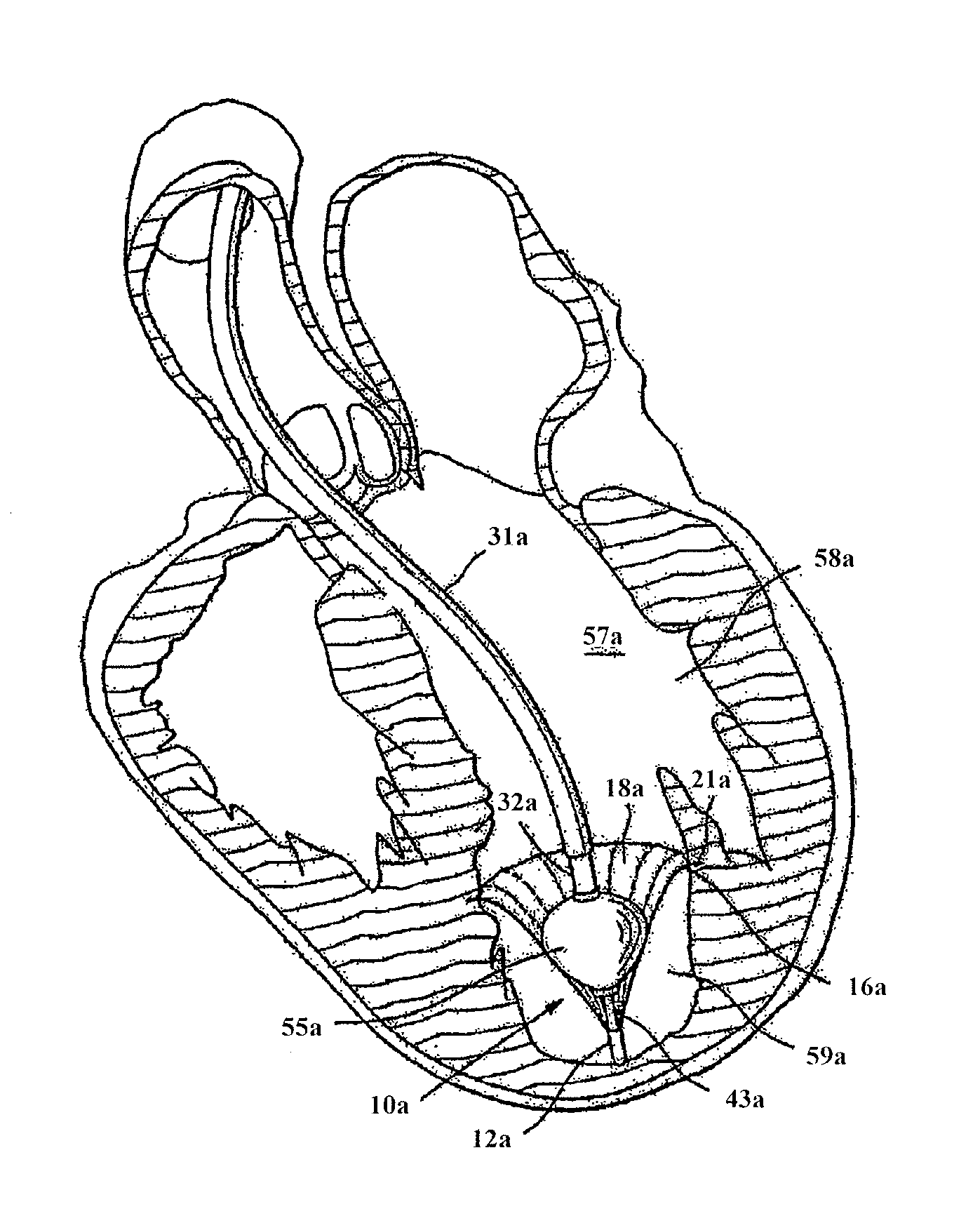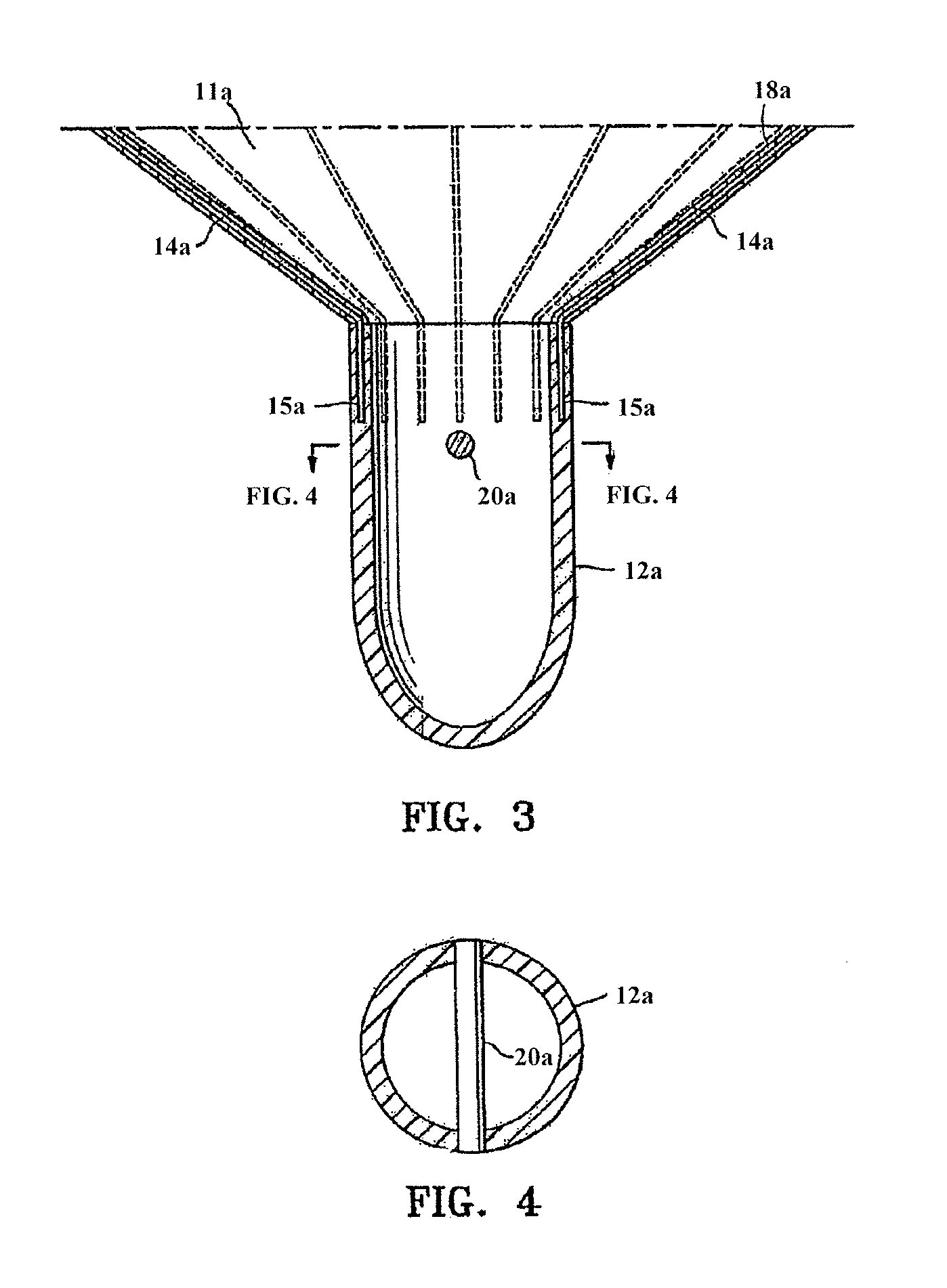Devices and methods for delivering an endocardial device
a technology of endocardial devices and endocardial valves, which is applied in the field of medical/surgical devices and methods, can solve the problems of reducing the effectiveness of the heart, back-up of pressure in the vascular system behind the ventricle, and millions of hospital visits internationally, so as to reduce the total volume of the heart chamber, improve the blood ejection fraction thereof, and reduce the stress applied to the heart
- Summary
- Abstract
- Description
- Claims
- Application Information
AI Technical Summary
Benefits of technology
Problems solved by technology
Method used
Image
Examples
first embodiment
[0160]In some embodiments, as the guide catheter 31a, 31b is withdrawn, it begins to bend as it is withdrawn through the vascular anatomy of the patient, through the aortic arch, for example. In some instances, this bend may drive the distal tip of the delivery catheter, and therefore the partitioning device, out of position. For example, the guide catheter may drive the device towards the center of the heart, i.e. towards the ventricular septum. In some instances, it may be preferred that the delivery catheter and / or partitioning device are not moved or repositioned by the guide catheter as it is withdrawn. This may be accomplished in one of several embodiments. In a first embodiment, as shown in FIG. 10, a ring 60b is added to the distal end of the delivery catheter 32b. A wire 62b may be coupled to the ring 60b. The wire may be disposed along the length of the delivery and / or guide catheter, and may be configured to maintain the position of the distal end of the delivery catheter...
third embodiment
[0221]As described above, embodiments of the partitioning device 10a, both unilaminar and bilaminar embodiments, are conveniently formed by placing a thermoplastic tube 60, e.g. polyethylene or high density polyethylene (HDPE), over the ribs 14a of the frame 13a as shown in FIG. 62A until the proximal ends 16a of the ribs 14a extend out the ends of the thermoplastic tubes to form thermoplastic-encased ribs. FIGS. 62A-62C illustrate a first, second, and third embodiment showing the frame of the device described herein having sleeves, or more specifically thermoplastic tubes 60. As shown, the device may include full sleeves 60 disposed along the full length of the struts (FIG. 62A), partial sleeves 60′ staggered along the length of the struts (FIG. 62B), or shortened sleeves 60″ (FIG. 62C). As shown in FIG. 62B, by reducing the amount of tubing used, and by staggering the positioning of the tubing along the length of the struts 14a, the implants collapsed profile may be reduced. As sh...
PUM
| Property | Measurement | Unit |
|---|---|---|
| pressure | aaaaa | aaaaa |
| pressure | aaaaa | aaaaa |
| pressure | aaaaa | aaaaa |
Abstract
Description
Claims
Application Information
 Login to View More
Login to View More - R&D
- Intellectual Property
- Life Sciences
- Materials
- Tech Scout
- Unparalleled Data Quality
- Higher Quality Content
- 60% Fewer Hallucinations
Browse by: Latest US Patents, China's latest patents, Technical Efficacy Thesaurus, Application Domain, Technology Topic, Popular Technical Reports.
© 2025 PatSnap. All rights reserved.Legal|Privacy policy|Modern Slavery Act Transparency Statement|Sitemap|About US| Contact US: help@patsnap.com



